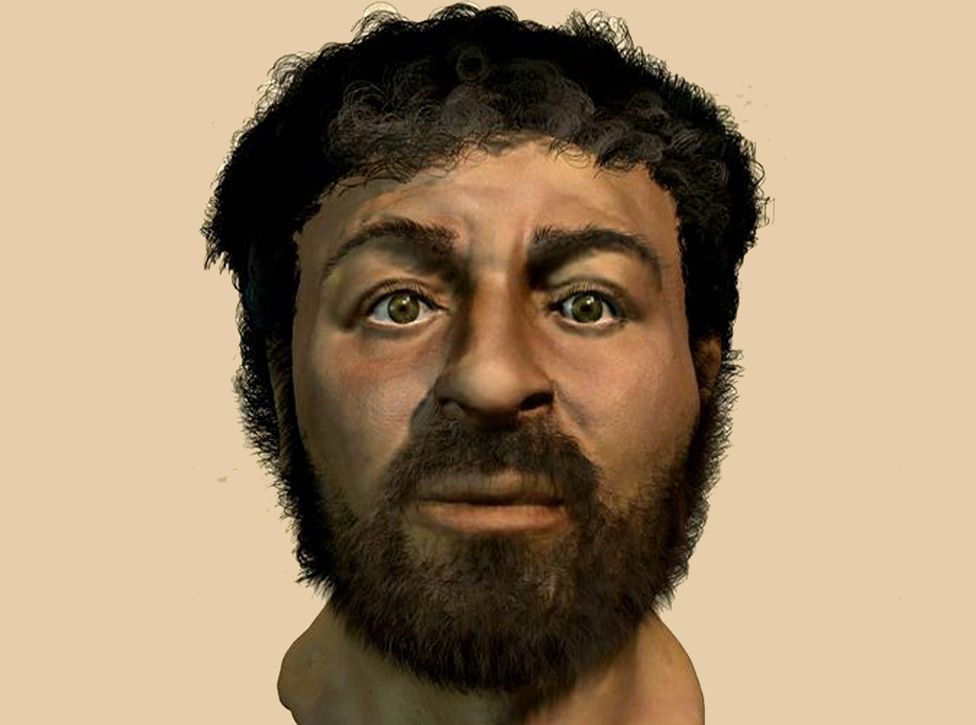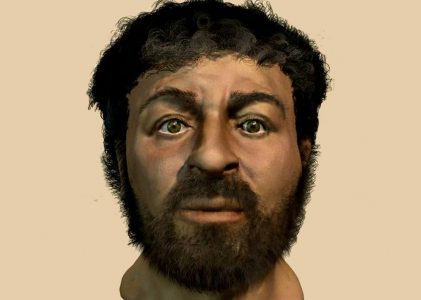Jesus was black.
So say a growing chorus of people who wish to counter the assumption that Jesus was white. Oh… and that he also had striking blue eyes, gorgeous long blond hair, and the perfect coiffed beard (one of the many ways that I wish I could be like Him).
You’ve probably come across paintings of the “white” Jesus.
He has been, after all, the subject of some of the most famous pieces of artwork and, indeed, some of the most cringey, schmaltzy attempts at art, in human history – all of which, nevertheless, highlights a long-held European bias in depicting, or imagining, what Jesus might have looked like.
There is no doubt, however, that if the historical Jesus wasn’t actually black, then the Son of God in human form was at least a brown-skinned middle eastern Jew.
This truth must surely disgust our white supremacist brothers and sisters.
But isn’t it just like Jesus to flip all claims about his appearance and identity on their respective heads.
Because… it could be argued that those presuming the “whiteness” of Jesus may be just as right as those of us who acknowledge that Jesus was a POC … and, at the very same time, it could be argued that we are all equally as misguided.
[Ooohhh… provocative…!!!]
Yep, but hear me out.
You see, throughout his public ministry, Jesus preached and lived the upside-down Kingdom of God, a kingdom with a “different values system”[1] to the world into which he came (1st century Palestine) and, dare I say it, a different values system to the world, the country, the race, the society, the community, and even the family we belong to today.
Now, at this point, you may be wondering what the colour of Jesus’ skin and his claims about a kingdom with a “different values system” have to do with being a Christian leader.
It will all become clear, I promise (at least, I hope so).
Christian Leadership is Incarnational
Last year, I wrote a lengthy paper about missional leadership, which included the following excerpt…
Incarnational ministry starts with Jesus. He is “the Word that became human and made his home among us” (John 1:14). Moreover, Jesus is the incarnation, the embodiment, “the full image and expression of the Father,”[2] full of unfailing love and faithfulness (John 1:14). In other words, as Ross Langmead puts it, “God chose to identify with humanity, becoming one of us and in Jesus living a life of radical and transforming love.”[3] Thus, a message of world-transforming love was demonstrated through a life of world-transforming love.[4]
“God’s incarnating nature and its expression in the incarnation of Jesus Christ together provide the basis for mission, the motivation and enabling power for mission and the model for mission.”[5] Therefore, missional leadership is also a call to incarnational ministry, requiring of the Christian leader an “interior quest to become more like Jesus in one’s ‘spirit’ or attitudes,”[6] to be the “enfleshment” of Jesus. In this way, the Missio Dei is not only “enabled and guided by the continuing presence of Christ [in the world] through the Holy Spirit.”[7] God’s mission continues as Jesus ‘becomes flesh’ through his followers.
Here’s the point… God’s mission continues as Jesus ‘becomes flesh’ through you.
It means that, at any given moment, Jesus is black, white, brown, Australian, Asian, male, female, whatever… as YOU, a disciple of Jesus Christ, become the living embodiment of Jesus, “the full image and expression of the Father,” in the place that God has planted you and in the context of your leadership.
So, it may well be that Jesus becoming flesh through YOU means he does look like a white man with blue eyes and blond hair.
But he could also look like an African American woman who is referred to as Papa.
Whatever the context may be, Jesus becoming flesh through YOU is more about continuing the mission of God by embodying His very nature.
It is about becoming more like the Jesus that has your background, your racial identity, your social status, your position in the family, and who looks remarkably like YOU… and who then makes his or her home with the people God has called you to serve.
The truth is that Jesus represents, and has representatives in, every culture, every race, and every socio-ethnic group.
He lives among rich and poor, with refugees and kings, and you’ll find him at home with any gender. Jesus is as diverse as those who call themselves His disciples, those followers of Jesus living lives of world-transforming love.
[1] John C. Hutchison, “Servanthood: Jesus’ Countercultural Call to Christian Leaders,” in Bibliotheca Sacra 166 (January-March 2009): 57.
[2] Stephen J. Wellum, “10 Things You Should Know about the Incarnation,” Crossway, last modified December 21, 2016, accessed July 15, 2021, https://www.crossway.org/articles/10-things-you-should-know-about-the-incarnation/.
[3] Ross Langmead, The Word Made Flesh: Towards An Incarnational Missiology (Lanham, MD: University Press of America, 2004), 58.
[4] Ross Langmead, “The Word Made Flesh: Towards an Incarnational Missiology,” 58.
[5] Ross Langmead, “The Word Made Flesh: Towards an Incarnational Missiology,” 43.
[6] Ross Langmead, “The Word Made Flesh: Towards an Incarnational Missiology,” 61.
[7] Ross Langmead, “The Word Made Flesh: Towards an Incarnational Missiology,” 66.




